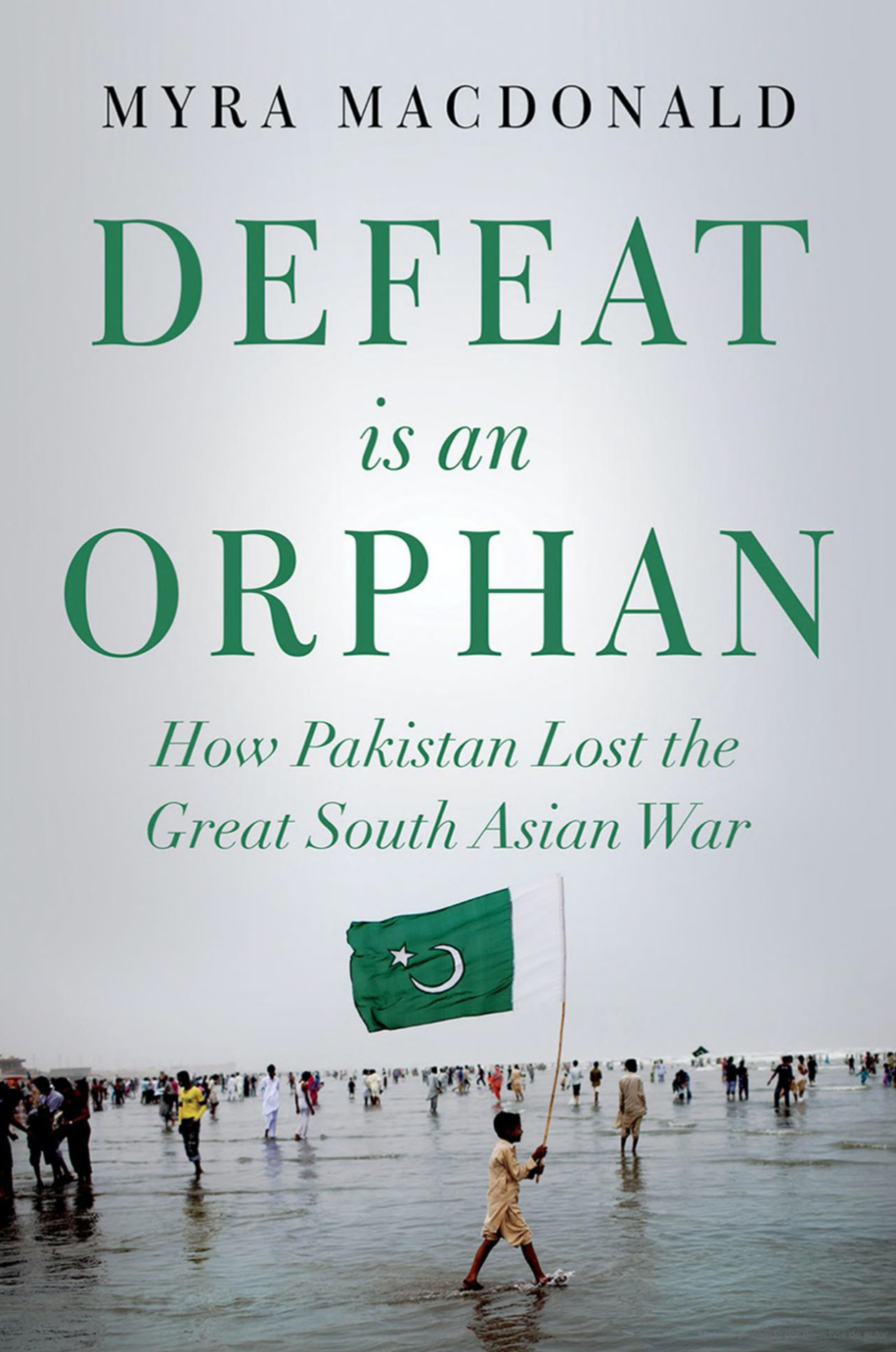[Myra MacDonald, Defeat is an Orphan. How Pakistan Lost the Great South Asia War. Penguin. London, 2016. 313 p.]
review / Ramón Barba
 One might think that Myra McDonald's book rather confuses the reader, as degree scroll talks about a Great War in the Indian subcontinent of which there is no record. In reality, the book financial aid helps the reader - especially the Western reader, who is more distant from the cultural and historical framework of that part of the world - to understand the complexity of the relations between India and Pakistan. A Reuters correspondent for more than thirty years, with long experience in the region, McDonald knows how to add up data concrete facts, without getting bogged down in anecdote, and quickly get to the underlying force behind them.
One might think that Myra McDonald's book rather confuses the reader, as degree scroll talks about a Great War in the Indian subcontinent of which there is no record. In reality, the book financial aid helps the reader - especially the Western reader, who is more distant from the cultural and historical framework of that part of the world - to understand the complexity of the relations between India and Pakistan. A Reuters correspondent for more than thirty years, with long experience in the region, McDonald knows how to add up data concrete facts, without getting bogged down in anecdote, and quickly get to the underlying force behind them.
Her thesis is that since the birth of the two states with the partition of the Jewel in the Crown at the break-up of the British Empire, Pakistanis and Indians have been engaged in a long confrontation, which has even had its moments of live fire. It has been a prolonged and bitter enmity between the two countries, with its sporadic battles: a Great War, according to the author, which Pakistan ultimately lost.
Generally, while India has sought its national affirmation in the exercise of democracy, Pakistan has based its national idiosyncrasies on Islam and conflict with India, with the dispute over control of Kashmir its bloodiest manifestation. This fixation with India, from agreement with McDonald, has led Islamabad to use support for jihadist groups to create instability on the other side of the partition line, plunging Pakistan itself into an abyss from which it has so far been unable to extricate itself. McDonald follows a generally objective argument, but the book seems to be written from India, with little sympathy for the Pakistanis.
The story begins with the episode of the hijacking of the Indian Airlines plane between Christmas Eve and New Year's Eve 1999 by five Kashmiri guerrillas, with 155 people on board, which led to a serious conflict between Islamabad and New Delhi, as the Indian government interpreted that the operation had received some backing from the neighbouring country. The episode serves to describe the dramatic standards of the strategic struggle between the two countries, which the previous year culminated their development of the atomic bomb.
The book pays particular attention to this degree program to achieve the nuclear weapon - the Indians because the Chinese had it, the Pakistanis because they saw the Indians catching up - and which raised a question core topic of nuclear proliferation: can weapons be used on a smaller scale between two deadly enemies when both have the atomic bomb? It has been shown to be so, and not only that, McDonald argues: Pakistan's lack of fear of an Indian nuclear attack, given that it is deterred by Pakistan's own arsenal, would have made Islamabad more confident in encouraging terrorist attacks against India.
In the early 1960s the status in India was somewhat delicate: in 1964 China had detonated the atomic bomb, which, coupled with Pakistani pressure in Kashmir, put the world's largest democracy at a difficult juncture. This led to India's launch of the Smiling Buddha in 1974 (as an unloaded bomb) and the beginning of close competition with Pakistan to join the small nuclear club, as a consequence of the dialectical logic that then governed their relationship. Although it was believed that the bomb might be in one side's possession, it was not until the late 1998 detonations that this became clear.
The author considers that the two countries arrived that year on a very even footing: India, which was larger, had to resolve small internal crises in order to move forward, while Pakistan enjoyed a certain stability. However, the achievement of the atomic bomb meant that Pakistan, after a misreading of reality, failed to take advantage of its opportunities in the era of globalisation that was then opening up, and remained stuck in a bellicose logic, while India made the leap that has made it gain undoubted weight as a world power. This is the Pakistani "defeat" of which degree scroll speaks.
In addition to this attention to more recent decades, the text also looks back to 1947, when the two independent states were born, to explain many of the dynamics of the subsequent relationship between the two. Relations with China, Pakistan's ally, and with the United States, which had closer interests with Pakistan and is now closer to India, are also discussed.